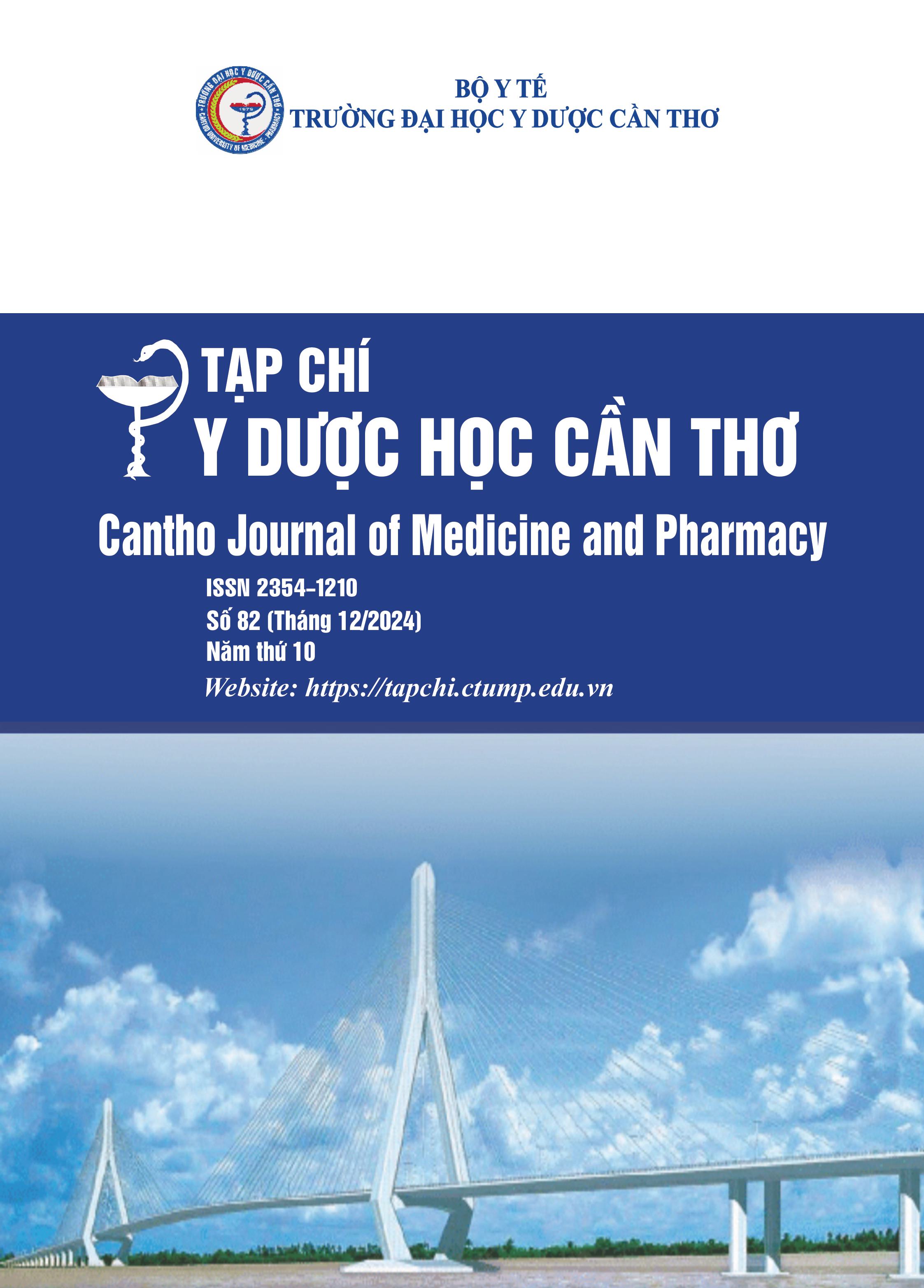INVESTIGATION ON THE BOTANY, DNA BARCODE, AND ANALYSIS OF CHEMICAL CONSTITUENTS OF PIPER BETLE L.
Main Article Content
Abstract
Background: Betel leaf (Piper betle L.) is a popular medicinal plant widely used in traditional medicine. Researching its identification characteristics as well as chemical constituents provides a scientific basis for the safe and effective utilization of this plant in the medical field. Objectives: To determine the botanical characteristics, DNA barcode, and chemical constituents of betel leaf (Piper betle). Materials and methods: Betel leaf samples were collected from Hau Giang province. Botanical characteristics were evaluated through morphological and microscopic analyses, while DNA barcodes were identified using agarose gel electrophoresis. Chemical constituents were determined through sequential extraction using three solvents of increasing polarity. Major compounds were identified using specific reagents. Results: The study identified the morphological and microscopic characteristics of Piper betle, notably the presence of anomocytic stomata, secretory ducts, and oil cells. DNA barcoding confirmed the species as Piper betle. Chemical analysis revealed the presence of essential oils, flavonoids, alkaloids, tannins (polyphenols), saponins, and triterpenoids. Conclusion: The findings provide valuable information on the botanical characteristics and chemical constituents of betel leaf (Piper betle), highlighting its potential for appropriate and safe utilization as a medicinal resource.
Article Details
Keywords
betel leaf, Piper betle, DNA barcodes, chemical composition
References
2. Sarma C., Rasane P., Kaur S., Singh J., Singh J et al. Antioxidant and antimicrobial potential of selected varieties of Piper betle L. (Betel leaf). An Acad Bras Cienc. 2018. 90, 3871–3878, doi: 10.1590/0001-3765201820180285.
3. Das S., Parida R., Sandeep I.S., Nayak S., Mohanty S. Biotechnological intervention in betelvine (Piper betle L.): A review on recent advances and future prospects. Asian Pacific J. Trop. Med. 2016. 9, 938–946, doi: 10.1016/j.apjtm.2016.07.029.
4. Võ Văn Chi. Tự điển thực vật thông dụng-tập 2. Nhà xuất bản Khoa học và kỹ thuật. 2004. 1386-1387.
5. Kwankaew P., Sangkanu S., Mitsuwan W., Boonhok R., Lao-On U. et al. Inhibitory and antiadherent effects of Piper betle L. leaf extract against Acanthamoeba triangularis in co-infection with Staphylococcus aureus and Pseudomonas aeruginosa: A sustainable one-health approach. Vet World. 2024. 17(4), 848-862, doi: 10.14202/vetworld.2024.848-862.
6. Noorazlan N.A.A., Camalxaman S.N., Mohamed E., Haron N., Rambely A.S. et al. Larvicidal potential of plant-based extracts against dengue vector: A short review. Medical Journal of Malaysia. 2024. 79(Suppl 1), 203-208.
7. Umar R.A., Zahary M.N., Rohin M.A.K., Ismail S. Chemical Composition and The Potential Biological Activities of Piper Betel–A Review. Malaysian Journal of Applied Sciences. 2018. 3, 1-8.
8. Madhumita M., Guha P., Nag A. Extraction of betel leaves (Piper betle L.) essential oil and its bio-actives identification: Process optimization, GC-MS analysis and antimicrobial activity. Industrial Crops and Products. 2019. 138, 111578. doi: 10.1016/j.indcrop.2019.111578.
9. Chakraborty J.B., Mahato S.K., Joshi K., Shinde V., Rakshit S. et al. Hydroxychavicol, a Piper betle leaf component, induces apoptosis of CML cells through mitochondrial reactive oxygen species-dependent JNK and endothelial nitric oxide synthase activation and overrides imatinib resistance. Cancer Science. 2012. 103(1), 88-99, doi: 10.1111/j.1349-7006.2011.02107.x.
10. Bộ Y Tế. Dược điển Việt Nam V. Nhà xuất bản Y học, Hà Nội. 2018.
11. Phạm Hoàng Hộ. Cây cỏ Việt Nam, tập III. Nhà xuất bản trẻ. 2002. 454-457.
12. Doyle, J.J., Doyle, J.L. Isolation of plant DNA from fresh tissue. Focus. 1990. 12, 13-15.
13. Pin K.Y., Chuah T.G., Rashih A.A., Law C.L., Rasadah M.A., et al. Drying of Betel Leaves (Piper betle L.): Quality and Drying Kinetics. Drying Technology. 2009. 27, 149–155, doi:
10.1080/07373930802566077.
14. Ramarao K.D.R., Razali Z., Somasundram C., Kunasekaran W., Jin T.L. Effects of Drying Methods on the Antioxidant Properties of Piper betle Leaves. Molecules. 2024. 29(8), 1762, doi: 10.3390/molecules29081762.


